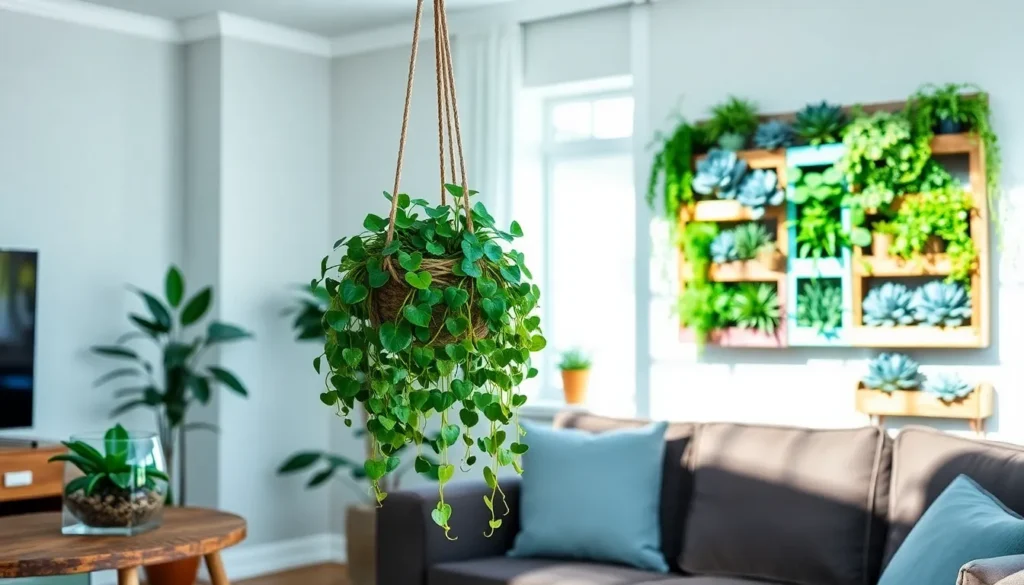Welcome to “7 Unique Plant Display Ideas for Your Home,” a treasure trove of creativity that invites both budding enthusiasts and seasoned green thumbs to transform their indoor spaces with botanical brilliance. Whether you’re just beginning your plant journey or have a jungle flourishing within your walls, this guide will inspire you to see your home in a new, verdant light.
In today’s fast-paced world, bringing nature indoors is more than just a trend—it’s a way to cultivate peace, beauty, and cleaner air right in your living space. These seven carefully curated display ideas offer not just aesthetic charm, but also practical benefits like improved mood and air quality, ensuring your home is as healthy as it is beautiful.
By exploring these innovative plant arrangements, you’ll gain the confidence to experiment and personalize your green oasis with ease. Embrace the joy of watching your plants thrive and transform your home into a sanctuary of life and color, knowing that success is just a leaf away!
Create a Vertical Plant Wall
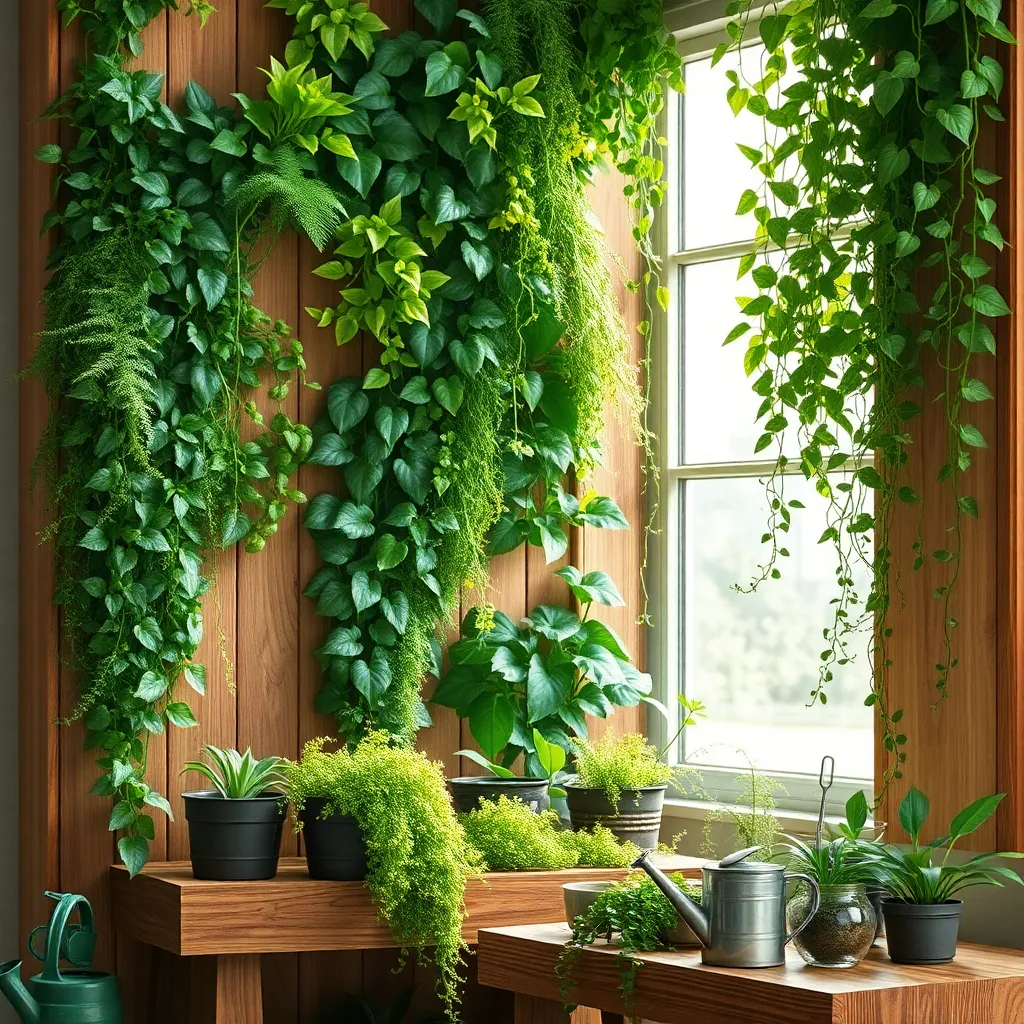
Building a vertical plant wall is an innovative way to maximize space and bring greenery into your home. Start by choosing a suitable wall that receives ample indirect light, as most houseplants thrive in these conditions.
Consider using a modular system or a simple DIY approach with wooden pallets. Fill the modules or pallets with a high-quality potting mix that retains moisture but also provides good drainage, such as a blend of peat moss, perlite, and compost.
Select plants that are well-suited for vertical growth, such as pothos, ferns, or succulents. These plants are not only visually appealing but also relatively low-maintenance, requiring watering only when the top inch of soil feels dry to the touch.
For those seeking a challenge, incorporate a drip irrigation system to ensure consistent watering, particularly in taller installations. Regularly check for pests and prune your plants to maintain their shape and health, ensuring your vertical plant wall remains lush and vibrant.
Utilize Hanging Planters Creatively
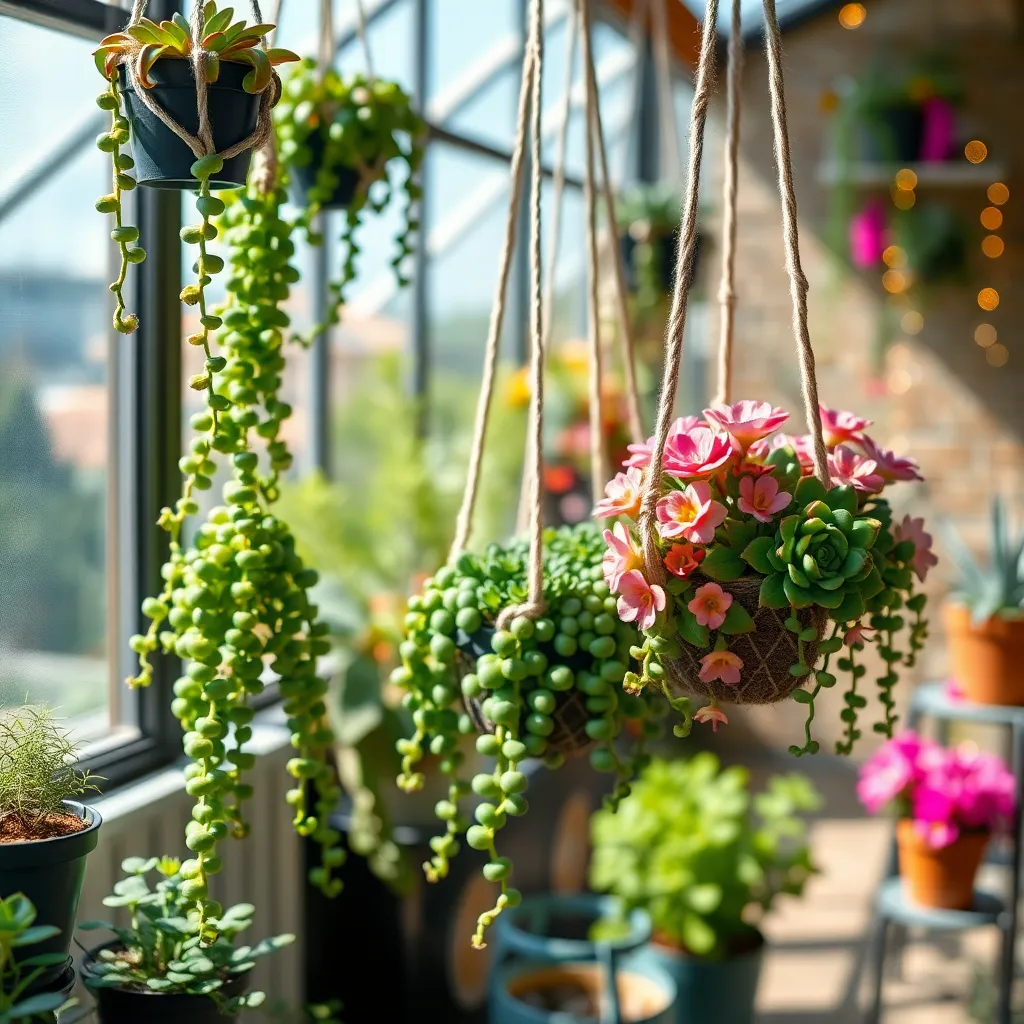
To add a touch of creativity to your space, consider using hanging planters to display your plants at varying heights. This approach not only maximizes space but also adds depth and dimension to your indoor or outdoor garden.
When selecting plants for hanging planters, choose varieties that thrive in well-draining soil, such as ferns or ivy. Ensure proper drainage by using a potting mix specifically designed for containers and incorporating materials like perlite.
Beginner gardeners can start with hardy plants like the spider plant or pothos, which are forgiving with light and water conditions. Water hanging plants when the top inch of soil feels dry, usually every 1-2 weeks depending on humidity levels.
Advanced gardeners might want to experiment with trailing succulents like string of pearls, which require a bit more attention to light and water. Provide bright, indirect light to prevent leaf burn, and let the soil dry out completely between waterings to mimic their native arid environments.
Incorporate Plants in Bookcases
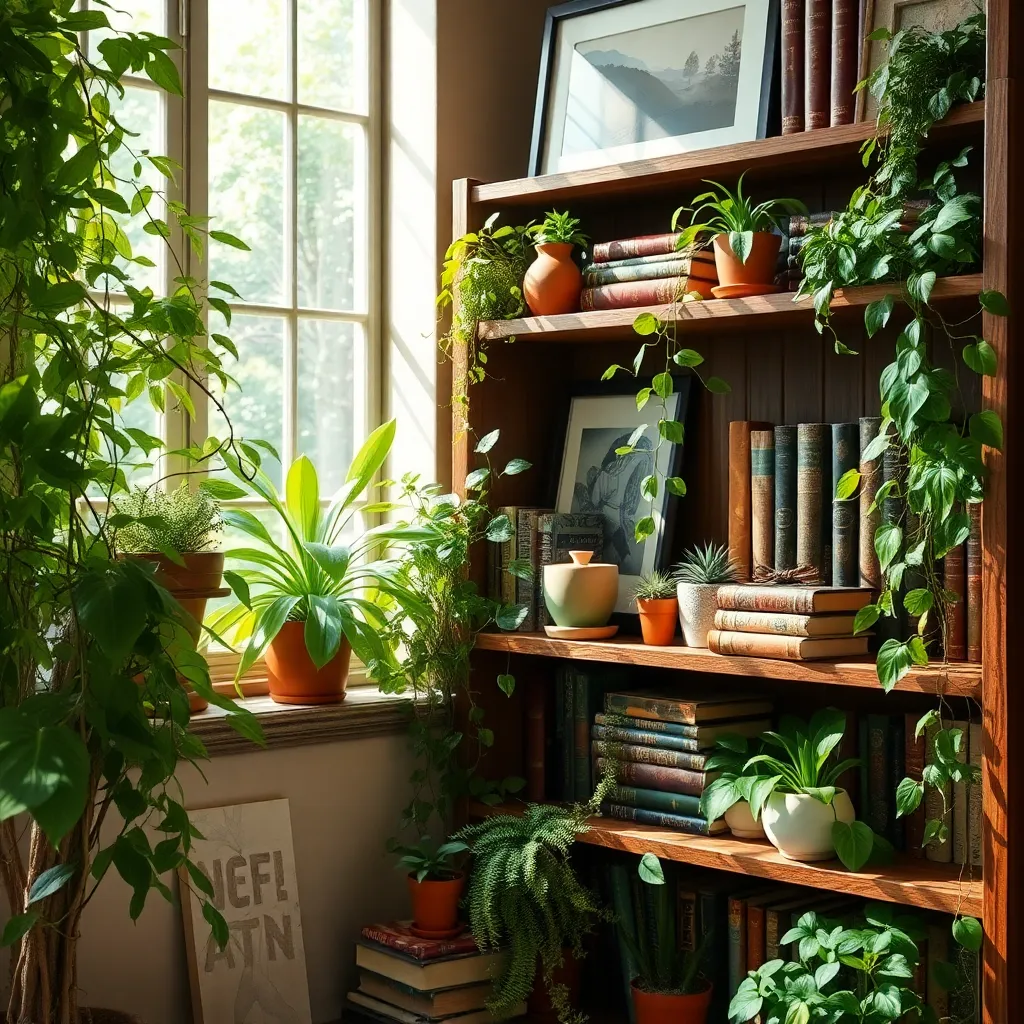
Bookcases offer a fantastic opportunity to blend literature and nature, creating a serene and inviting atmosphere. Begin by selecting small, low-maintenance plants such as succulents or air plants, which thrive in indoor conditions and require minimal care.
Ensure that your bookcase receives adequate light, as most plants need at least some indirect sunlight to thrive. Position plants on shelves that are closest to windows for optimal light exposure, but be mindful of drafts from windows or air conditioning units that could affect plant health.
Watering is key to maintaining healthy plants in your bookcase. Consider using a water spray bottle for air plants or succulents to prevent overwatering, and allow soil to dry out between waterings to mimic their natural conditions.
To elevate your bookcase display, mix different textures and heights by using plant stands or stack books to create varied levels. This not only adds visual interest but also allows each plant to receive the necessary light and space to grow.
Design a Tabletop Plant Terrarium
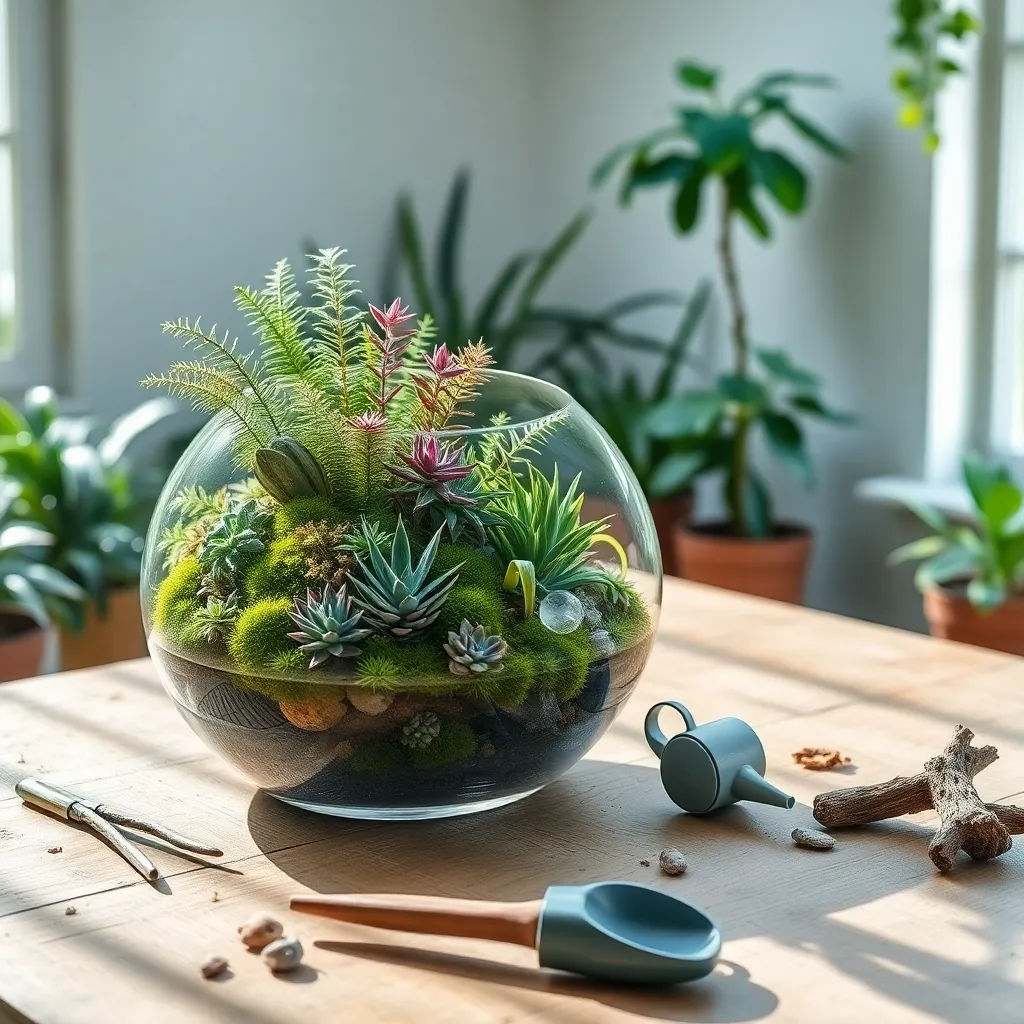
Creating a tabletop plant terrarium is an engaging way to bring nature inside your home. These miniature ecosystems are perfect for small spaces and can be tailored to fit your personal style.
To start, choose a clear glass container that suits your aesthetic, such as a simple jar or an ornate vase. It’s important that the container has a wide opening to allow easy access for planting and maintenance.
Next, layer the bottom of your container with small stones or pebbles for drainage, preventing water from accumulating at the base. Follow this with a thin layer of activated charcoal to keep the terrarium environment fresh and prevent mold.
Over the charcoal, add a layer of potting soil suitable for your chosen plants. For a classic look, consider using succulents or air plants, which thrive in the controlled environment of a terrarium.
When selecting plants, ensure they have similar water and light requirements to coexist happily. Succulents require bright, indirect light and minimal watering, while ferns prefer indirect light and more moisture.
After planting, use a gentle misting bottle to water your terrarium lightly, ensuring not to over-saturate the soil. Monitor your terrarium regularly, adjusting watering and trimming plants as needed to maintain its health and appearance.
Arrange Plants on Ladder Shelves
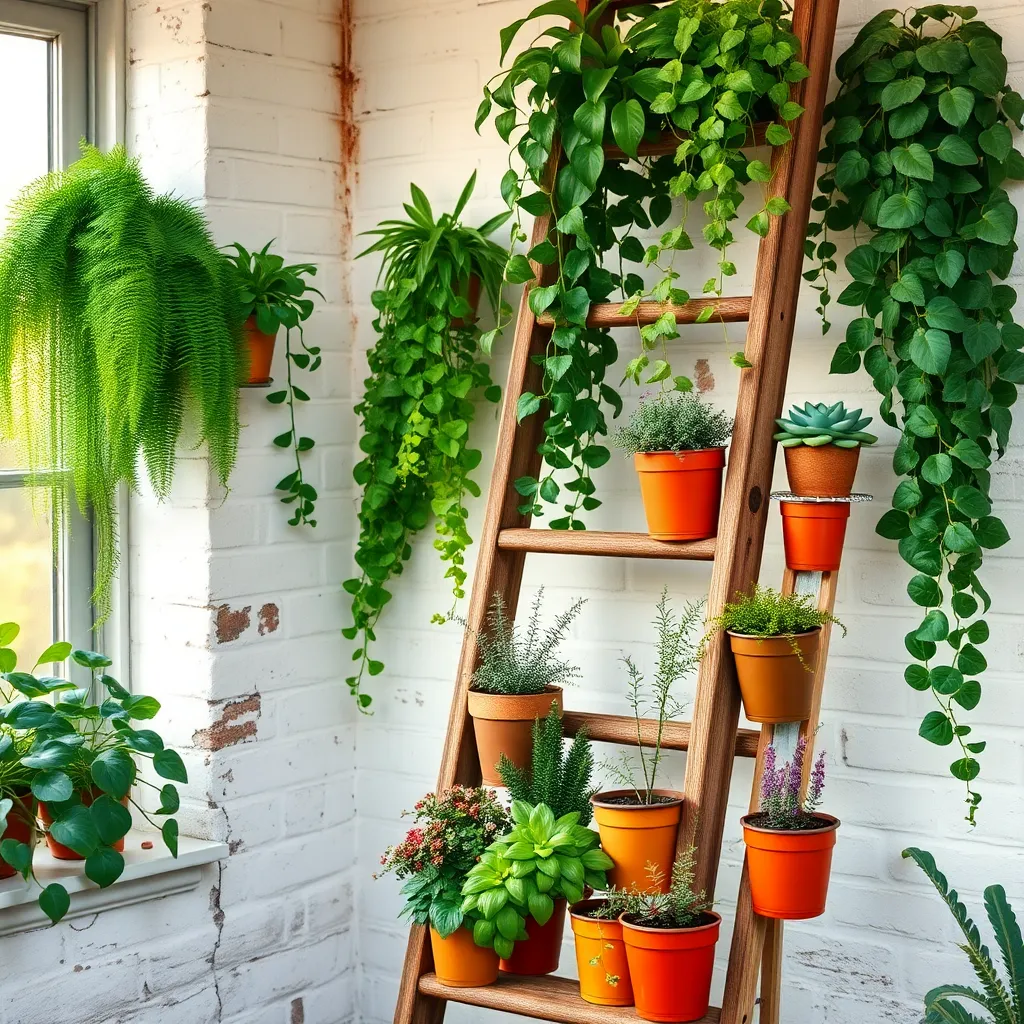
Using ladder shelves to display plants is a creative way to bring a touch of nature indoors while maximizing vertical space. Start by choosing shelves with adequate spacing to allow plants room to grow without overcrowding.
Consider grouping plants based on their light and watering needs to make maintenance easier. For example, place succulents and cacti on the top shelves where they can receive more sunlight, while ferns and philodendrons can thrive on lower, shadier levels.
To enhance visual interest, mix plants with varying heights and textures. Taller plants, like snake plants, can be placed on the ground beside the ladder, while trailing vines, such as pothos, can cascade beautifully from higher shelves.
Incorporate pots and containers of different sizes and colors to add an extra layer of design to your display. Ensure each pot has drainage holes, and consider using a catch tray underneath them to protect the shelves from water damage.
Mix Plants with Wall Art
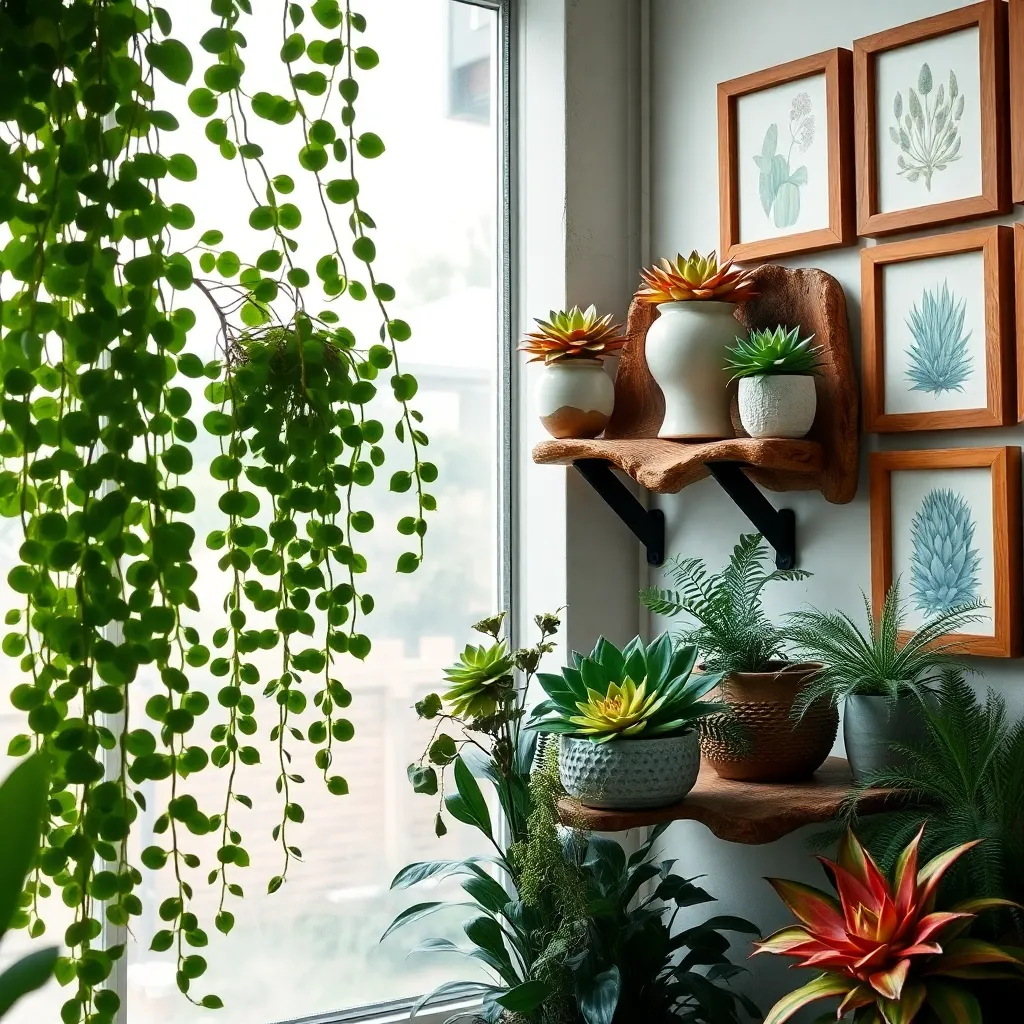
Combining plants with wall art is an excellent way to create a vibrant and dynamic display in your home. Consider using hanging planters or wall-mounted pots to integrate greenery seamlessly with your decor.
Begin by choosing plants that thrive in the lighting conditions of your chosen wall space. Succulents and air plants are ideal for areas with bright, indirect light and require minimal maintenance, making them perfect for beginners.
To add depth and interest, pair your plants with artistic elements like framed prints or decorative wall panels. Choose art pieces with colors that complement your plants to create a harmonious blend that enhances the overall aesthetic.
For a more advanced touch, consider using a living wall system, which allows you to grow a variety of plants vertically. Ensure your wall art is securely fastened and select plants that have similar watering needs to simplify care.
Display Plants in Decorative Bowls
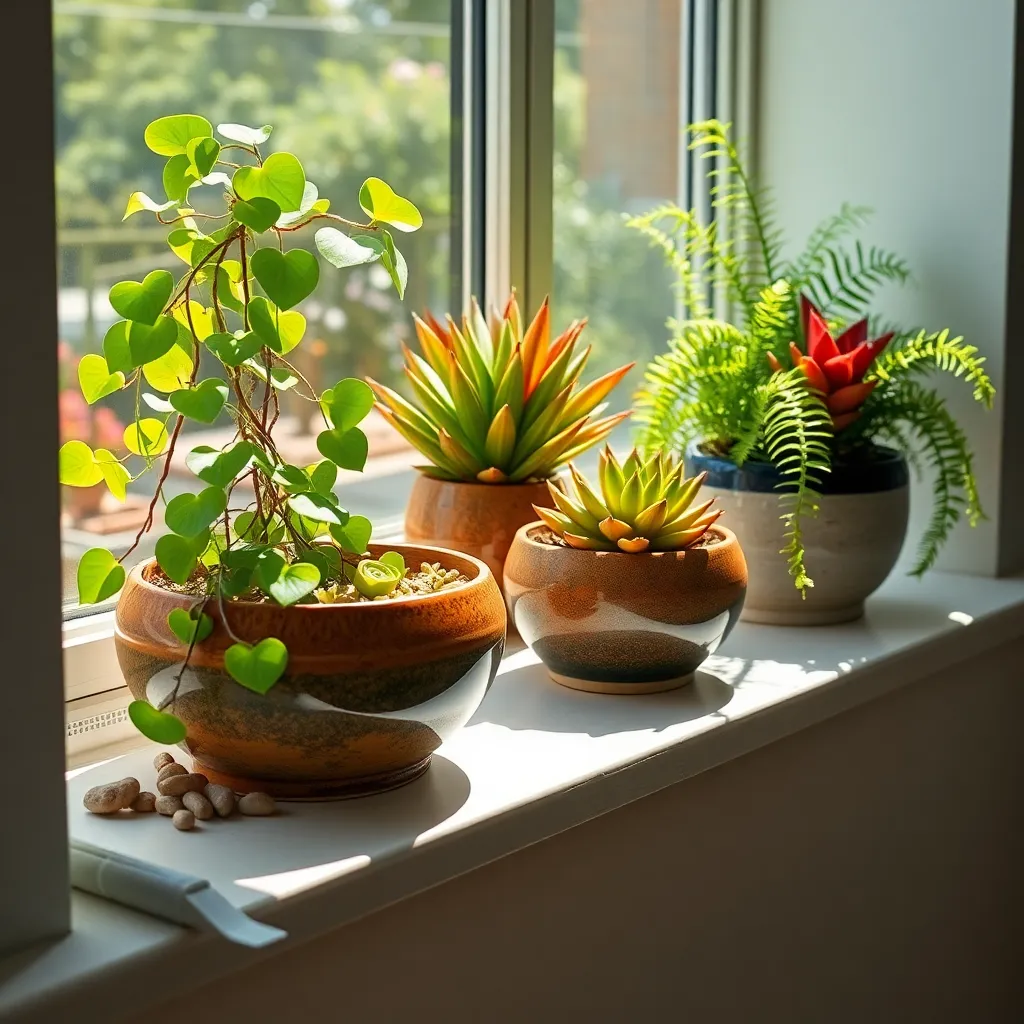
Displaying plants in decorative bowls can transform any corner of your home into a vibrant oasis. Choose shallow bowls with drainage holes to ensure that excess water can escape, preventing root rot.
Opt for plants that thrive in low soil volumes, such as succulents or small ferns. Succulents are particularly suited for this setup as they require minimal water—typically once every two weeks—and prefer well-draining cactus soil.
For a more advanced display, consider creating a mini indoor garden by mixing different plant species within the same bowl. Use a combination of textures and colors to add visual interest, such as pairing the smooth leaves of jade plants with the intricate fronds of a maidenhair fern.
When positioning your decorative bowl, ensure it receives adequate light for the plants chosen. Most succulents need bright, indirect sunlight, while ferns generally prefer lower light conditions, making it crucial to select a spot that suits your plant’s needs.
Conclusion: Growing Success with These Plants
In exploring the vibrant world of plant displays, we’ve uncovered seven unique ways to breathe life into your home and, metaphorically, into your relationships. From the nurturing embrace of vertical gardens that inspire growth, to the harmonious balance of hanging pots that teach equilibrium, each concept mirrors a vital relationship principle. Consider the whimsical charm of terrariums, reminding us of the importance of nurturing a shared environment, and the dynamic flexibility of movable planters, symbolizing adaptability. Window sill gardens highlight the beauty of shared light, while themed plant corners emphasize the joy of shared interests. Lastly, upcycled planters stand as a testament to creativity and renewal in relationships.
As you embark on this journey to enrich both your home and heart, start by choosing one plant display idea to implement today, fostering a fresh perspective on your connections. Remember, nurturing relationships, like plants, requires patience and care. Save this article as a resourceful guide to revisit whenever your relationships need a little bloom. By integrating these principles, you are setting the stage for a flourishing future filled with growth and understanding. Let this be your first step towards nurturing lifelong connections. Bookmark this article now and cultivate the garden of your relationships with confidence and joy.

